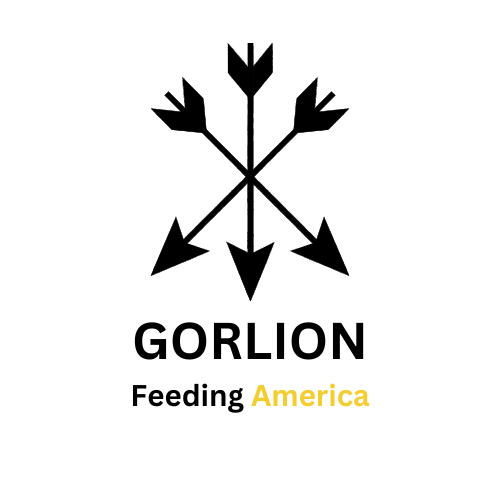Introduction:
In the ever-evolving world of finance and agriculture, a critical theme has persistently reverberated through our recent discussions – the looming storm of rising interest rates, economic uncertainty, and inflation. Today, we stand at a crossroads, with new data further illuminating the complexities of this landscape.
The Rising Tide of Inflation:
The latest economic data, a 0.4% rise in September’s Consumer Price Index (CPI), including a 0.3% increase in core CPI, confirms what many had speculated: the Federal Reserve is nowhere near achieving its 2% annualized inflation target. The year-over-year headline CPI is at 3.7%, and the core CPI stands at 4.1%. These numbers should serve as a stark reminder that inflation remains a formidable force, exerting its influence across sectors.
While inflation’s effects are felt throughout the economy, it’s the agricultural and food and beverage manufacturing industries that have been placed under the spotlight. This article will delve into the ramifications of these new developments, charting a path for food and beverage manufacturers to navigate the uncharted territory they find themselves in.
Ripple Effects in Agriculture:
To grasp the impact of these inflation figures, we must first look at how they reverberate through the agricultural sector. As consumer prices rise, so do the costs associated with farming. Agricultural commodities such as grains, corn, and soybeans witness significant price increases. While higher prices could translate to increased revenues for farmers, they are equally burdened with escalating expenses, be it for fuel, fertilizers, labor, or transportation.
Moreover, the supply chain disruptions and environmental challenges that have beset the agriculture sector in recent years further compound the predicament. Food and beverage manufacturers, heavily reliant on a consistent supply of raw materials, are grappling with the uncertainty of their sourcing channels. Inflation intensifies this quandary, as cost fluctuations become even harder to predict, leading to squeezed profit margins and potentially higher prices for consumers.
The Role of Interest Rates:
As the Federal Reserve attempts to curb inflation by raising interest rates, it introduces another layer of complexity into the equation. Historically low rates have fueled investments in agriculture, including land and equipment purchases. The tide is turning, and the cost of borrowing is rising, with prime rates hovering at 8.5% – a significant increase from the stable 3.5% rate observed from 2008 to 2022.
These interest rate hikes are felt acutely by farmers and producers who often rely on loans, many of which are set at prime plus a premium. The cost of financing agricultural operations has surged, a burden that can lead to reduced investments in expanding operations and modernizing equipment. It’s a double-edged sword; while these rate hikes aim to cool an overheating economy and control inflation, they can inadvertently hinder the growth of the agriculture sector.
The Challenges for Food and Beverage Manufacturers:
Food and beverage manufacturers face a unique set of challenges in this dynamic landscape. Inflation in raw material costs squeezes profit margins. The dilemma is whether to absorb these additional expenses, which may erode profits, or to pass them onto the consumer. In an era of fierce market competition, the latter is not always a viable option.
Furthermore, the fluctuating supply chain, exacerbated by the ongoing impacts of climate change and the strains of the global pandemic, leaves food and beverage manufacturers with heightened vulnerabilities. Securing a consistent supply of high-quality raw materials is a challenge in itself. Ensuring that these materials are affordable and that products can be delivered to market on time is an additional layer of complexity.
1. Navigating Uncharted Waters: Strategies for Food and Beverage Manufacturers:
In this era of uncertainty, food and beverage manufacturers need to be proactive in their approach. Here are some strategies to consider:
2. Diversification of Suppliers: Explore a diversified approach to sourcing agricultural commodities. Relying on a single supplier or region can amplify risk. A broader network of suppliers can help mitigate the impact of unforeseen disruptions.
3. Strategic Partnerships: Collaborate with agricultural commodity experts who can guide you through the challenges of the current market. Companies like Gorlion offer services such as Identity Preservation to ensure the quality of your raw materials.
4. Cost Management: Implement stringent cost management practices to identify areas where expenses can be optimized. This might include adopting energy-efficient technologies, streamlining logistics, and negotiating favorable terms with suppliers.
Risk Hedging: Use risk management tools such as commodity futures and options contracts to protect your business from sudden spikes in commodity prices. These financial instruments can offer some stability in a volatile market.
Gorlion: Your Partner in Unpredictable Times:
Now, more than ever, having a trusted partner is of paramount importance. Gorlion stands as a committed ally to food and beverage manufacturers navigating these turbulent waters. Our Identity Preservation program offers quality assurance for your agricultural commodities. Our expertise in forward contracts can provide stability in a volatile market, ensuring that you receive the resources you need at a predictable price.
As we sail through uncharted waters where inflation and interest rates wield their influence on the agricultural landscape, having a partner who understands the intricacies of your industry is essential. With Gorlion by your side, you can weather the storm of uncertainty and emerge stronger on the other side.
In conclusion, the new data confirming the persistence of inflation should serve as a wakeup call. As the agricultural and food and beverage manufacturing industries grapple with inflation’s ripple effects and the challenges introduced by rising interest rates, proactive and strategic measures are paramount. By adopting the right strategies and partnering with industry experts, these sectors can not only survive but thrive amidst the uncertainty that surrounds us.

